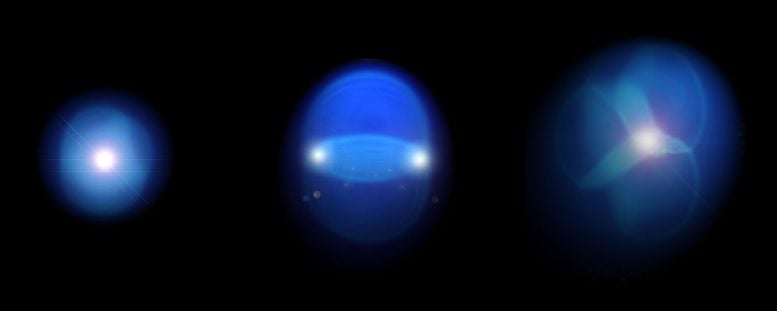
Visualization of expanding drops of quark-gluon plasmas in three geometric shapes. Credit: Javier Orjuela Koop
Researchers have created tiny droplets of the ultra-hot matter that once filled the early universe, forming three distinct shapes and sizes: circles, ellipses, and triangles.
The study, published today in Nature Physics, stems from the work of an international team of scientists and focuses on a liquid-like state of matter called a quark-gluon plasma. Physicists believe that this matter filled the entire universe during the first few microseconds after the Big Bang when the universe was still too hot for particles to come together to make atoms.
CU Boulder Professor Jamie Nagle and colleagues at Vanderbilt University collaborated on the experiment known as PHENIX and used a massive collider at Brookhaven National Laboratory in Upton, New York, to recreate that plasma. In a series of tests, the researchers smashed packets of protons and neutrons in different combinations into much bigger atomic nuclei.
They discovered that by carefully controlling conditions, they could generate droplets of quark-gluon plasma that expanded to form three different geometric patterns.
The findings provide the strongest evidence to date that such miniscule drops behave like a fluid. That’s something that scientists had previously thought was impossible, Nagle said.
“Our experimental result has brought us much closer to answering the question of what is the smallest amount of early universe matter that can exist,” said Nagle of the Department of Physics. He proposed this set of experiments in 2014 along with his colleagues.
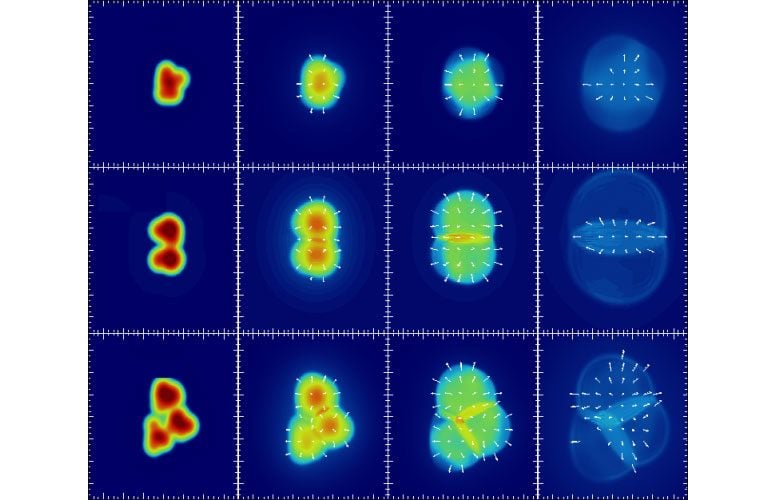
Graphic showing how atomic collisions between different starting ingredients expand over time to produce plasmas in distinct shapes. The top collision was generated by slamming a single proton into a gold atom; the middle from a collision between a deuteron and a gold atom; and the bottom from a collision between helium-3 and a gold atom. Credit: PHENIX, Nature 2018
Perfect fluid
Scientists first started studying such matter at Brookhaven’s Relativistic Heavy Ion Collider (RHIC) in 2000. They crashed together the heavy nuclei of gold atoms, generating temperatures of trillions of degrees Celsius. In the resulting boil, quarks and gluons, the subatomic particles that make up all protons and neutrons, broke free from their atomic chains and flowed almost freely.
Such a short-lasting state of matter, which theorists believe mimics conditions seen right after the Big Bang, likely behaves akin to a “perfect fluid,” said CU Boulder’s Paul Romatschke, an associate professor in physics.
“If you could have a bottle of this liquid on your desk,” said Romatschke, “and you were to tip it over and have it flow around an obstacle, it would do so with almost no friction.”
Several years later, a set of experiments at the Large Hadron Collider in Geneva, Switzerland, delivered a jolt to theorists: Researchers reported that they seemed to have created a quark-gluon plasma not by slamming together two atoms, but by crashing together just two protons.
That was surprising because most scientists assumed that lone protons could not deliver enough energy to make anything that could flow like a fluid.
Liquid ripples
Nagle, Romatschke, and their colleagues devised a way to test the idea in 2014: If such tiny droplets were behaving like a liquid, then they should hold their shape.
As Nagle explained, “Imagine that you have two droplets that are expanding into a vacuum. If the two droplets are really close together, then as they’re expanding out, they run into each other and push against each other, and that’s what creates this pattern.”
In other words, if you toss two stones into a pond close together, the ripples from those impacts will flow into each other, forming a pattern that resembles an ellipse. The same could be true if you smashed a proton-neutron pair, called a deuteron, into something bigger, Nagle and Romatschke reasoned. Likewise, a proton-proton-neutron trio, also known as a helium-3 atom, might expand out into something akin to a triangle.
And that’s exactly what the PHENIX experiment found: collisions of deuterons formed short-lasting ellipses, helium-3 atoms formed triangles, and a single proton exploded in the shape of a circle.
The results, the researchers said, could help theorists better understand how the universe’s original quark-gluon plasma cooled over milliseconds, giving birth to the first atoms in existence.
A next-generation experiment called sPHENIX is now being built, with leadership from researchers at CU Boulder, to explore quark-gluon plasmas at even smaller length scales.
Reference: PHENIX Collaboration, “Creation of quark-gluon plasma droplets with three distinct geometries” by PHENIX Collaboration, 10 December 2018, Nature.
DOI: 10.1038/s41567-018-0360-0

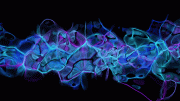
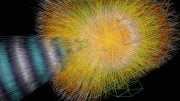
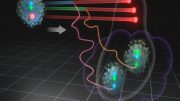
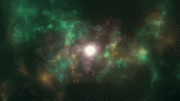
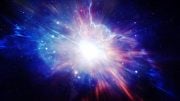
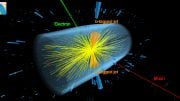
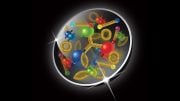
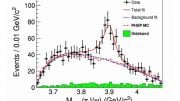
Be the first to comment on "Physicists Create Tiny Droplets of Early Universe Matter"